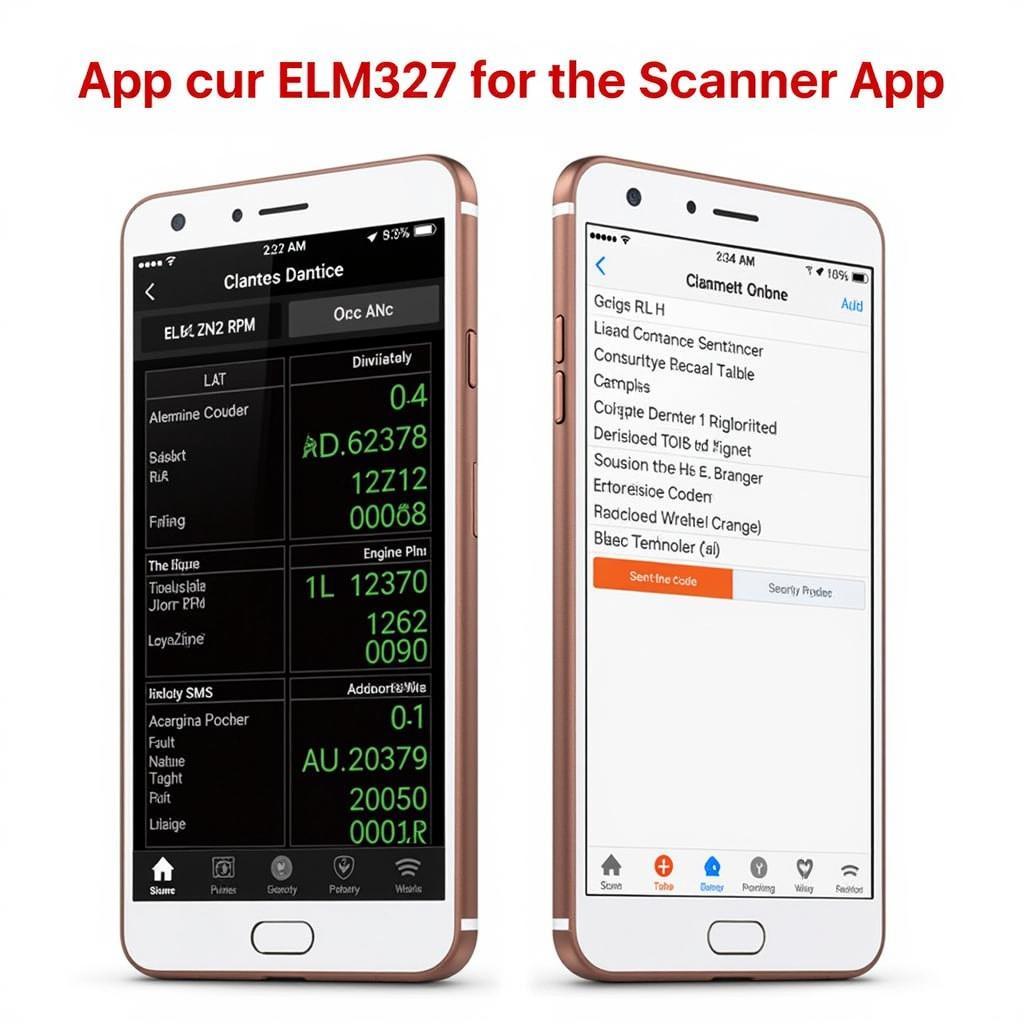Modern vehicles are essentially rolling computers, with intricate networks of sensors and modules constantly communicating with each other. To understand and diagnose issues within these complex systems, technicians need access to the information flowing through them. This is where a high-quality auto scan tool comes in, providing a window into the vehicle’s inner workings by displaying live data. But what exactly can these tools see? Let’s delve into the world of automotive diagnostics and explore the wealth of information available through live data.
[image-1|live-data-on-scan-tool-screen|Live data displayed on a scan tool screen|A mechanic is using a high-quality auto scan tool plugged into a car’s OBD-II port. The scan tool screen displays various live data parameters such as engine RPM, coolant temperature, and oxygen sensor readings. The image highlights the real-time information these tools can provide.]
Unveiling the Power of Live Data
Live data refers to real-time information streamed directly from a vehicle’s electronic control units (ECUs). Unlike static diagnostic trouble codes (DTCs) that indicate past issues, live data provides a dynamic view of the vehicle’s current state. This allows technicians to observe sensor readings, actuator commands, and system statuses as they happen, enabling more accurate diagnosis and efficient repairs.
Key Insights from Live Data
A high-quality auto scan tool can access a vast array of live data parameters, each offering valuable insights into specific systems and components. Here are some key areas where live data proves invaluable:
Engine Performance
- Engine RPM: Monitor engine speed to identify idling problems, misfires, or other performance issues.
- Coolant Temperature: Crucial for diagnosing overheating, thermostat malfunctions, or cooling system inefficiencies.
- Intake Air Temperature: Impacts fuel-air mixture and can indicate potential intake system restrictions.
- Throttle Position: Determine if the throttle is responding correctly to pedal input, essential for diagnosing driveability concerns.
- Oxygen Sensor Readings: Analyze exhaust gas composition to evaluate catalytic converter efficiency and fuel-air mixture accuracy.
[image-2|mechanic-analyzing-live-data|Mechanic analyzing live data from a scan tool| A close-up shot of a mechanic’s hands holding a scan tool, with the screen displaying a graph of live data parameters over time. The image emphasizes the importance of analyzing data trends for diagnosis.]
Transmission System
- Transmission Fluid Temperature: Critical for diagnosing transmission overheating or potential fluid degradation.
- Gear Position Sensor: Verify correct gear engagement and diagnose issues like slipping or rough shifting.
- Torque Converter Lock-Up: Monitor the engagement of the torque converter clutch, impacting fuel efficiency and performance.
Emissions Control
- EVAP System Pressure: Detect leaks in the evaporative emissions system, contributing to fuel vapor leaks and environmental concerns.
- Oxygen Sensor Heater Status: Verify proper operation of oxygen sensor heaters, essential for accurate emissions readings.
Other Vital Parameters
- Battery Voltage: Assess battery health and charging system performance.
- Vehicle Speed Sensor: Confirm accurate speedometer readings and diagnose potential ABS or traction control issues.
- Airbag System Status: Check for faults within the airbag control module or sensors.
The Benefits of Using Live Data for Diagnostics
Utilizing live data offers numerous advantages over relying solely on DTCs:
- Proactive Diagnosis: Live data allows technicians to identify potential issues before they escalate into major problems, potentially saving time and costly repairs.
- Accurate Pinpointing of Faults: By observing real-time sensor values and system responses, technicians can more accurately isolate the root cause of a problem.
- Verification of Repairs: After a repair, live data confirms the effectiveness of the fix by displaying corrected values and system behavior.
“Live data is like having a conversation with the car,” says John Miller, a seasoned automotive engineer. “Instead of just getting a trouble code, you’re seeing what the car is experiencing in real-time, making diagnosis much more precise.”
[image-3|car-on-lift-with-mechanic-using-scan-tool|Mechanic using a scan tool on a car lifted on a hoist| A car is positioned on a lift in a professional garage setting. A mechanic is underneath the vehicle, using a scan tool to access live data and diagnose a problem. This image showcases the practical application of scan tools in a repair environment.]
Choosing the Right Scan Tool
Not all auto scan tools are created equal. To harness the full power of live data, it’s crucial to choose a high-quality tool that offers:
- Wide Vehicle Coverage: Compatibility with a broad range of makes and models ensures versatility.
- Comprehensive Data Access: The ability to read and interpret a vast array of live data parameters is essential.
- User-Friendly Interface: An intuitive interface with clear data presentation simplifies diagnosis.
- Regular Updates: Automotive technology constantly evolves, so regular software updates are crucial for staying current.
Conclusion
Understanding what live data a high-quality auto scan tool can see is paramount for accurate and efficient vehicle diagnostics. By providing a real-time glimpse into the intricate workings of modern vehicles, live data empowers technicians to identify issues, pinpoint faults, and verify repairs with greater precision. Investing in a capable scan tool and learning to interpret live data effectively is an investment in providing top-notch automotive care.
Need help choosing the right auto scan tool for your needs? Contact ScanToolUS at +1 (641) 206-8880 or visit our office at 1615 S Laramie Ave, Cicero, IL 60804, USA. We’re here to help you unlock the power of advanced automotive diagnostics.


